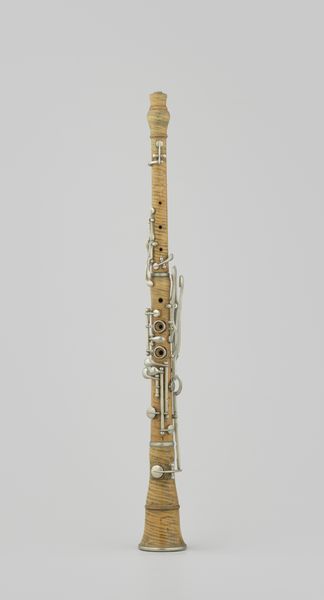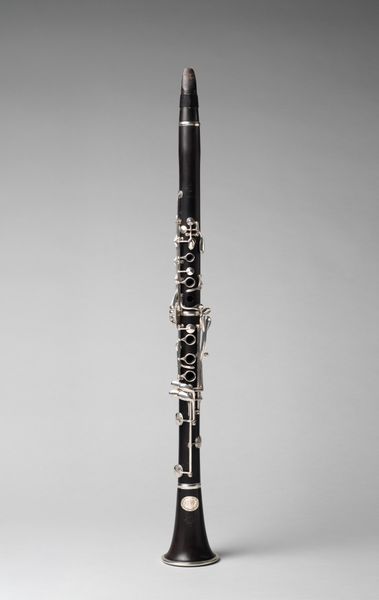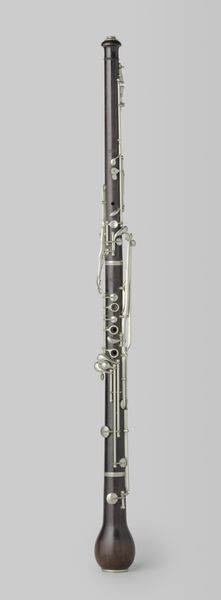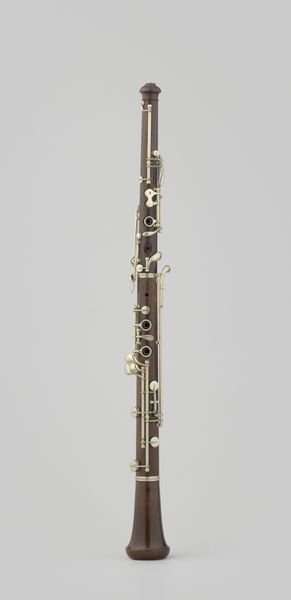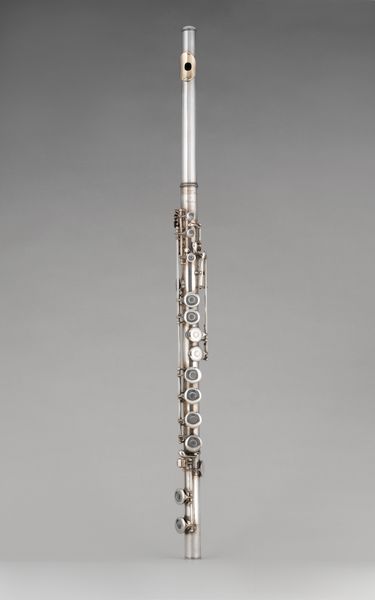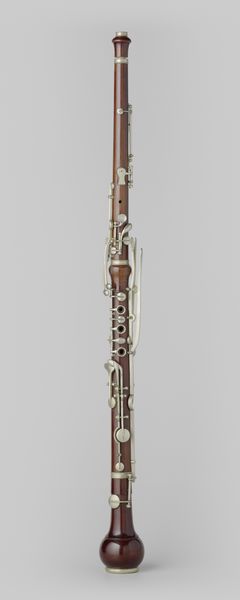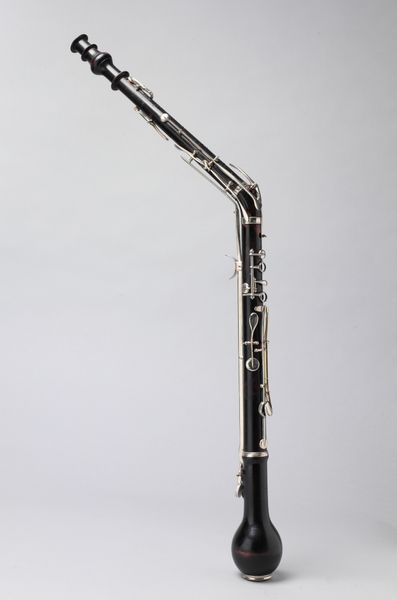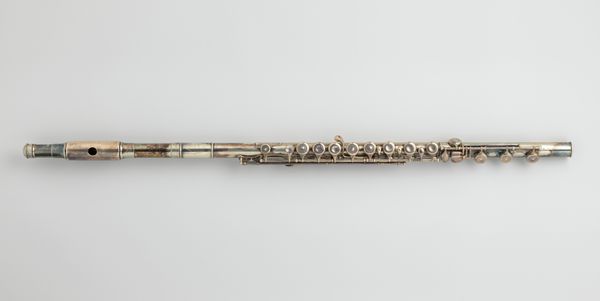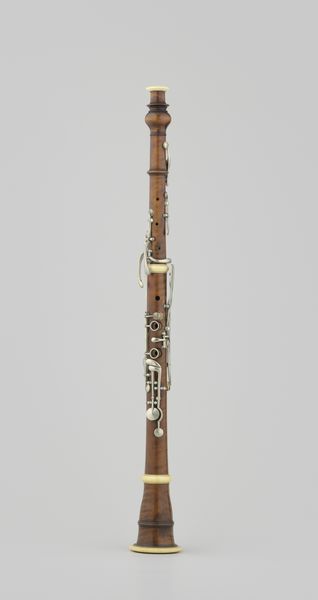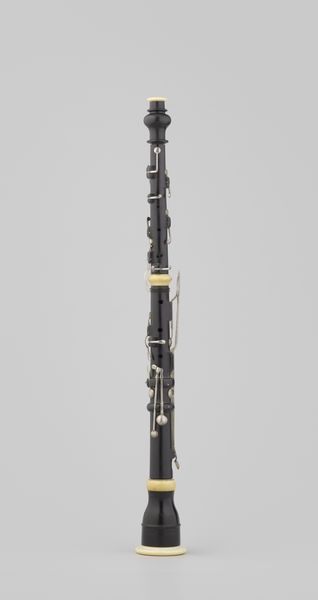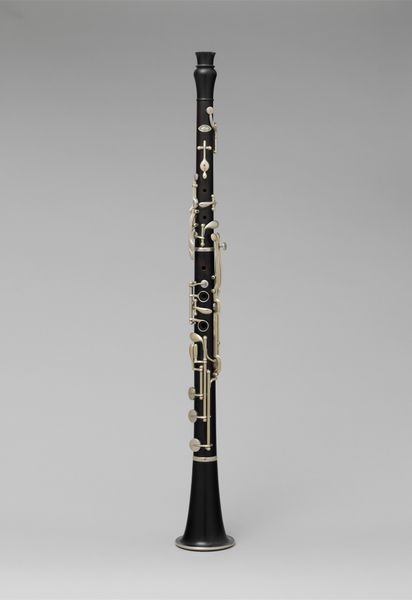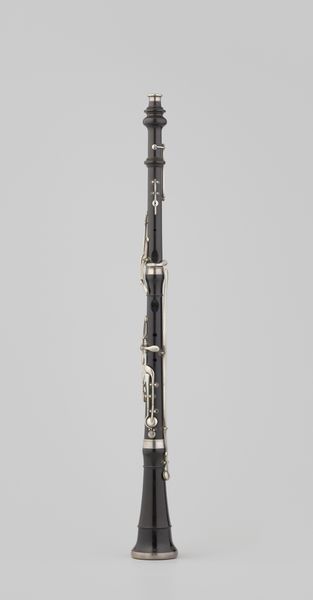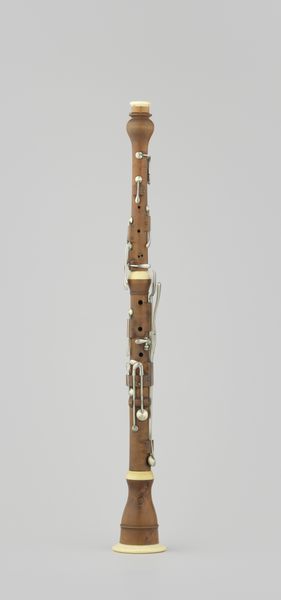
metal, photography
#
metal
#
photography
#
modernism
Dimensions: length 60.6 cm, diameter 0.8 cm, diameter 5.3 cm
Copyright: Rijks Museum: Open Domain
Editor: So this is a photograph of an oboe made by Cabart in the 1890s. It looks like it's made entirely of metal. What strikes me is how modern it feels even though it’s over a century old. What do you see in this piece? Curator: What interests me here is thinking about the shift from primarily wooden instruments to metal during the late 19th century. Consider the societal shifts happening then: industrialization, mass production, new sonic landscapes emerging in urban centers. To me, this oboe embodies that transition. It’s not just a shift in material; it reflects evolving ideas about sound, functionality, and even social class, as instruments become more accessible. What does that industrial aesthetic tell us about access to music at that time? Editor: That's interesting. I hadn’t considered how material relates to the culture of the time. It makes me think about who would have been able to afford a metal oboe versus a wooden one, and how that would have impacted musical performances and maybe even who was allowed to participate in orchestras. Curator: Precisely. Who had the means to engage in these rapidly changing technologies? Music, seemingly separate, is completely embedded within larger socioeconomic power structures. Editor: This photograph allows you to look so closely; you see the intricacy of the keys and levers that I would otherwise miss. I didn’t think about the socioeconomic impact of instrument materials, and that has given me a whole new appreciation for considering these kind of cultural factors. Curator: Seeing beyond the surface is the historian's imperative.
Comments
No comments
Be the first to comment and join the conversation on the ultimate creative platform.
